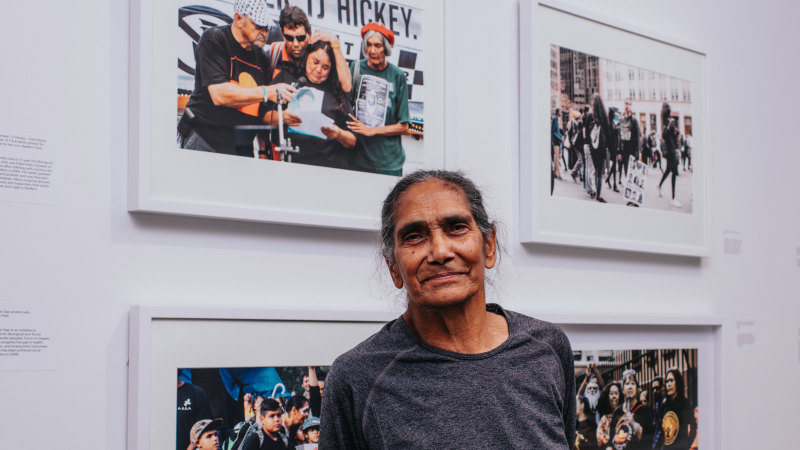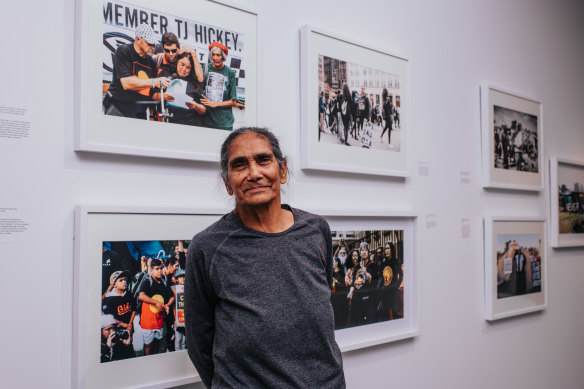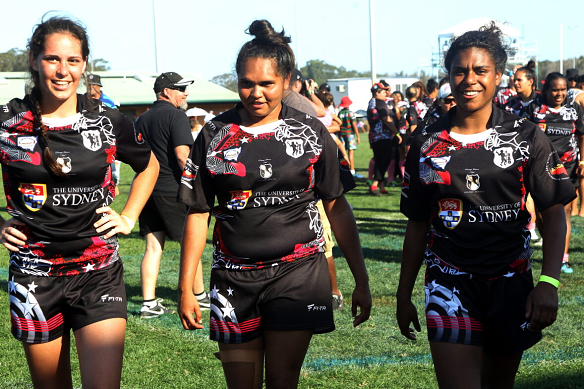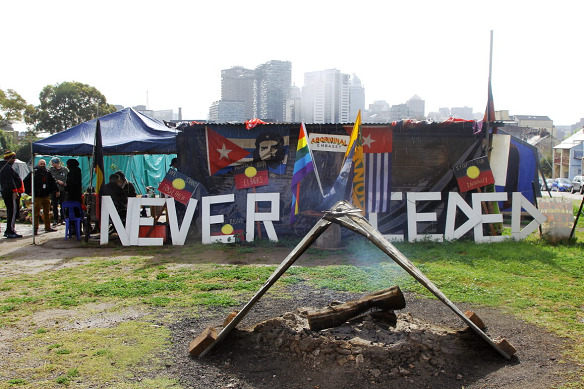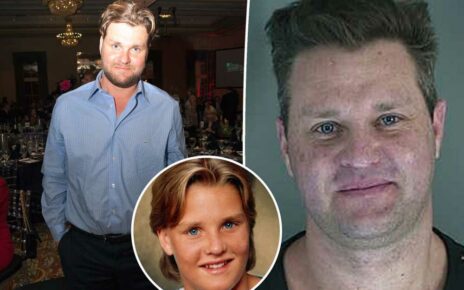Save articles for later
Add articles to your saved list and come back to them any time.
When 15-year-old Barbara McGrady was handed a “little chemist camera” by her mother, she knew exactly what she wanted to capture.
A Gamilaroi/Murri woman who grew up on the NSW-Queensland border in a small town called Mungindi, McGrady wanted to tell her community’s story “our way, the way I see it, and who we are as people”.
Indigenous Australian photojournalist Barbara O’Grady has been capturing iconic moments in Indigenous history for the past 30 years. Credit: James Brickwood
And that is what McGrady, 73, has continued to do over a long and distinguished career in photojournalism.
Now her work is being chronicled in a free exhibition at the University of Sydney’s Chau Chak Wing Museum.
Barbara McGrady: Australia Has a Black History showcases McGrady’s best works from a 30-year photographic archive.
McGrady describes sports as her “forte”, capturing iconic images of AFL stars Adam Goodes and Lance Franklin, boxer Anthony Mundine and tennis champion Ash Barty throughout her career. She also captured political moments such as 2014’s Black Lives Matter protests and cultural events including The Sapphires film premiere in 2012.
Three players from the victorious Redfern All Blacks women’s team walk off the field after the 2014 Koori Knockout final. Credit: Barbara McGrady
“I put my images out there to show who and what we are as people,” she says. “I know the story. I know what it’s like to live in two worlds.”
Life was far from easy for McGrady growing up in the 1960s when casual racism was an everyday reality.
“I knew this, the way they thought about us … we weren’t allowed in town after six o’clock … we weren’t allowed in the hospital rooms, we had to be on the veranda,” she says.
Black Lives Matter protest rally, Martin Place, 2014.Credit: Barbara McGrady
Despite what she witnessed and her community being pushed to the margins, McGrady says she never really felt out of place.
“I had good parents and a good community and a good mob … I always thought, you are the interloper, you are the invader. You came here, we were always here,” she says.
And while she describes the outcome as “symbolic,” she nominates Kevin Rudd’s national apology in 2008 as one of the events that stood out to her the most.
“That was a real incredible day where I met cousins I didn’t know I had – and we started talking [about how] their grandparents were taken away,” she said.
McGrady has lived in Glebe for the past 40 years. Over the years she has detected a change in attitude towards Indigenous people.
Redfern Aboriginal Tent Embassy, The Block, Redfern, 2014.Credit: Barbara McGrady
“Especially people from overseas, they want to know who we are as a people, our culture, how we came to be the people we are today, [and] what happened along the way … because we have more of a voice now through different means and media,” she says.
McGrady believes in the power of story to overcome almost anything.
“Tell people whether they’re from here or they migrated here … your story and your cultural connections and the way you feel about who you are as a person and this land. Their attitude changes, and they learn something – and that’s why I put my stories out there, because I’m proud of who we are as a people, and how we have survived and thrived regardless”.
Barbara McGrady: Australia Has a Black History, University of Sydney’s Chau Chak Wing Museum, until June 10, 2024.
Find out the next TV, streaming series and movies to add to your must-sees. Get The Watchlist delivered every Thursday.
Most Viewed in Culture
From our partners
Source: Read Full Article
